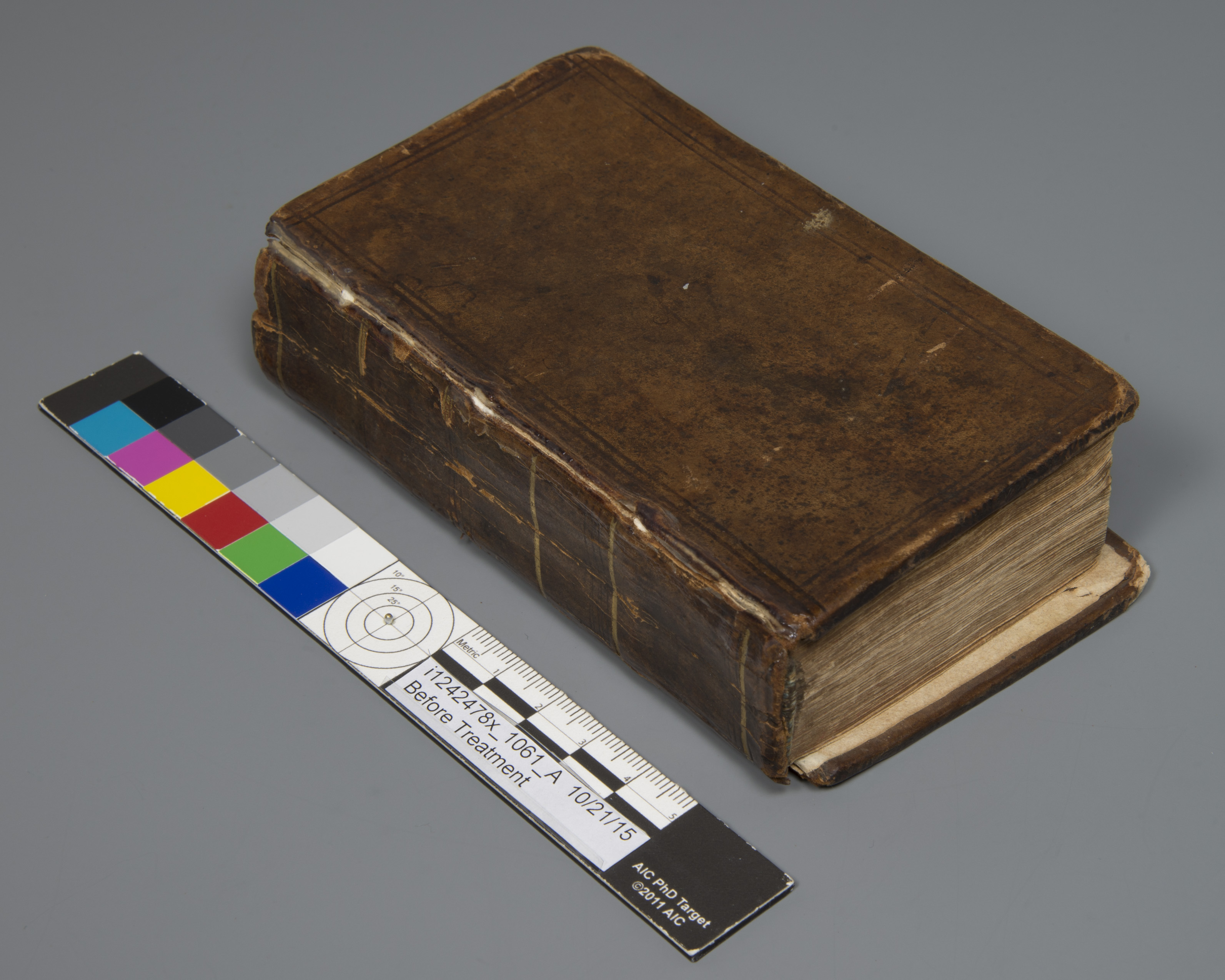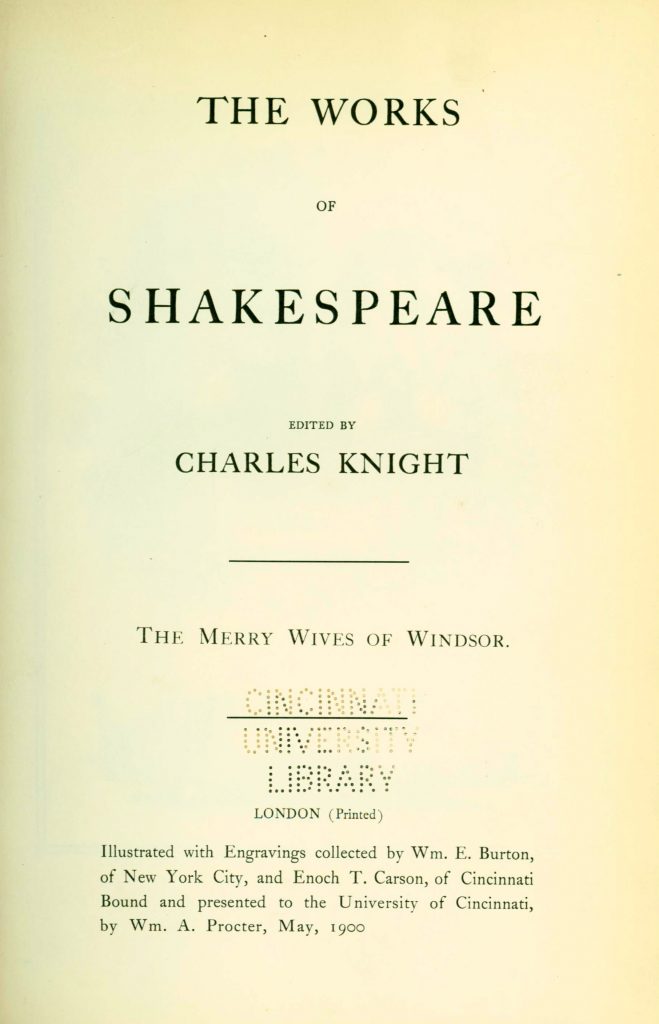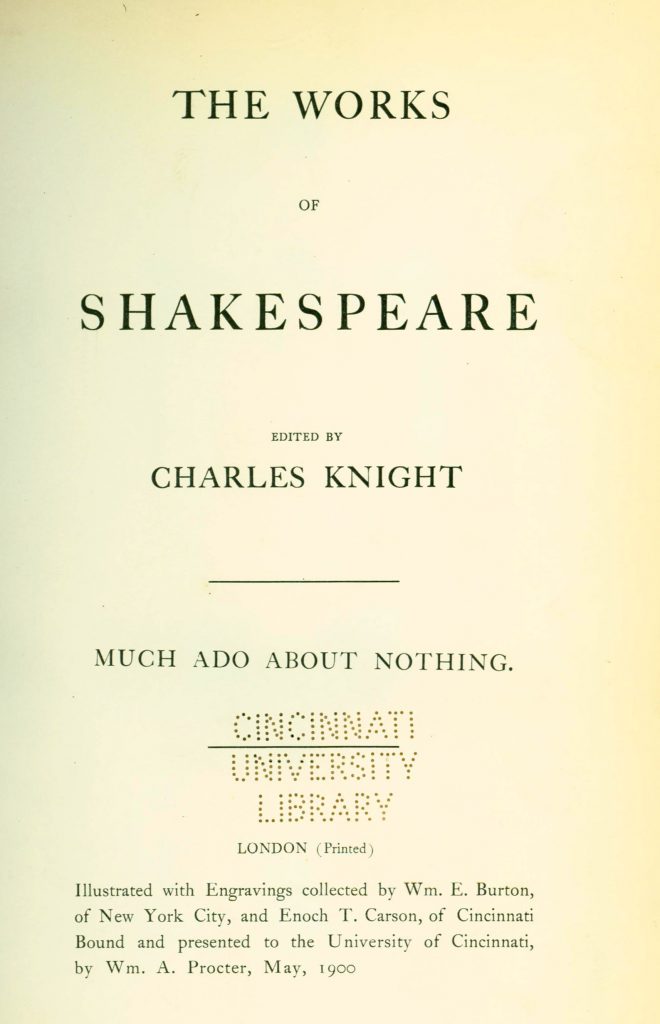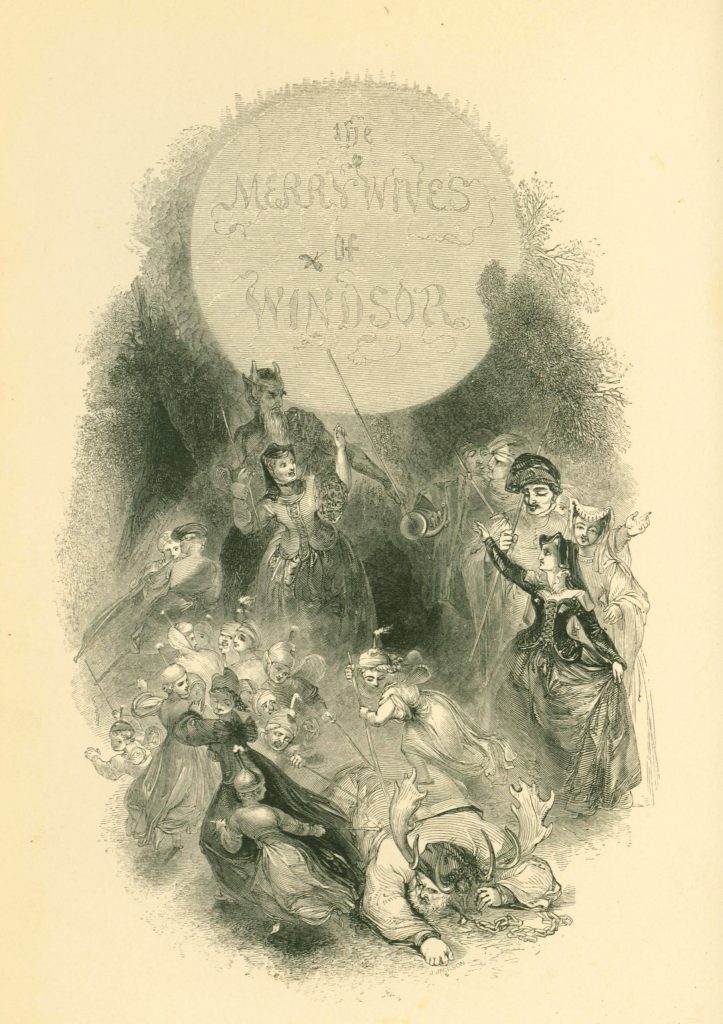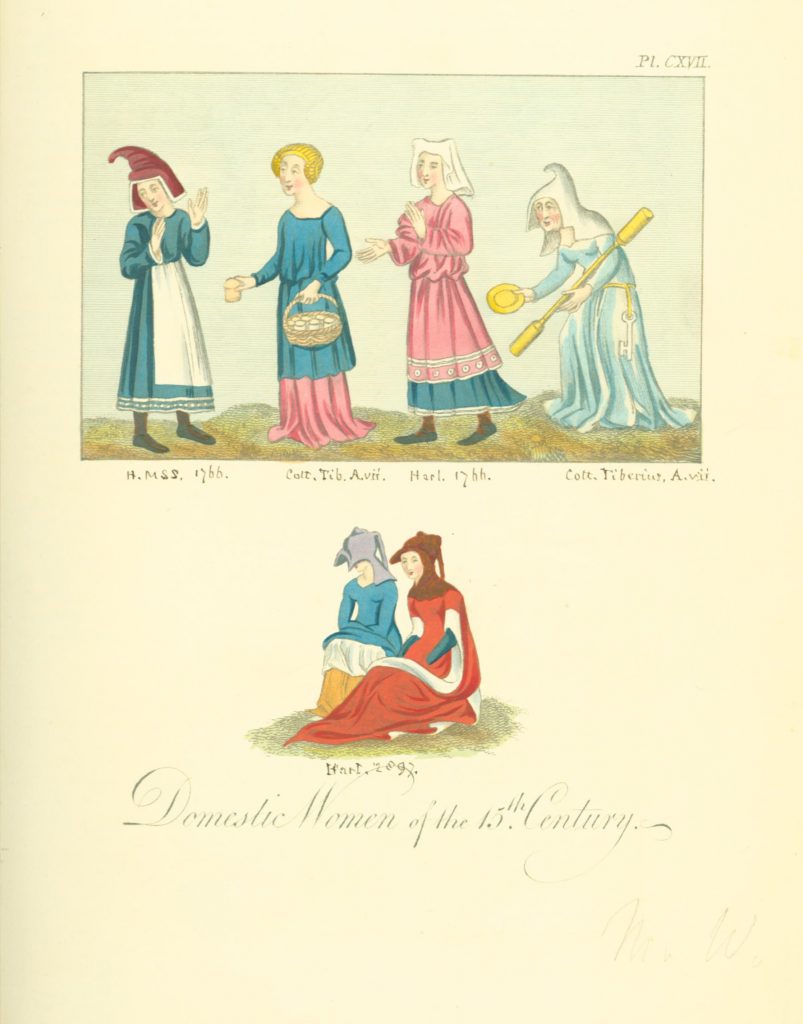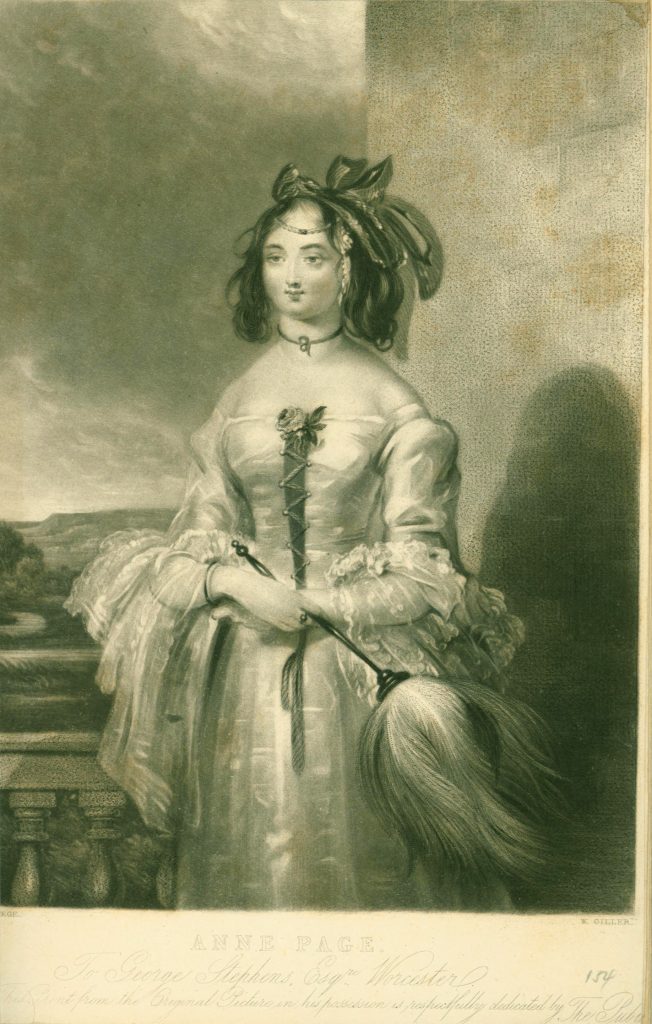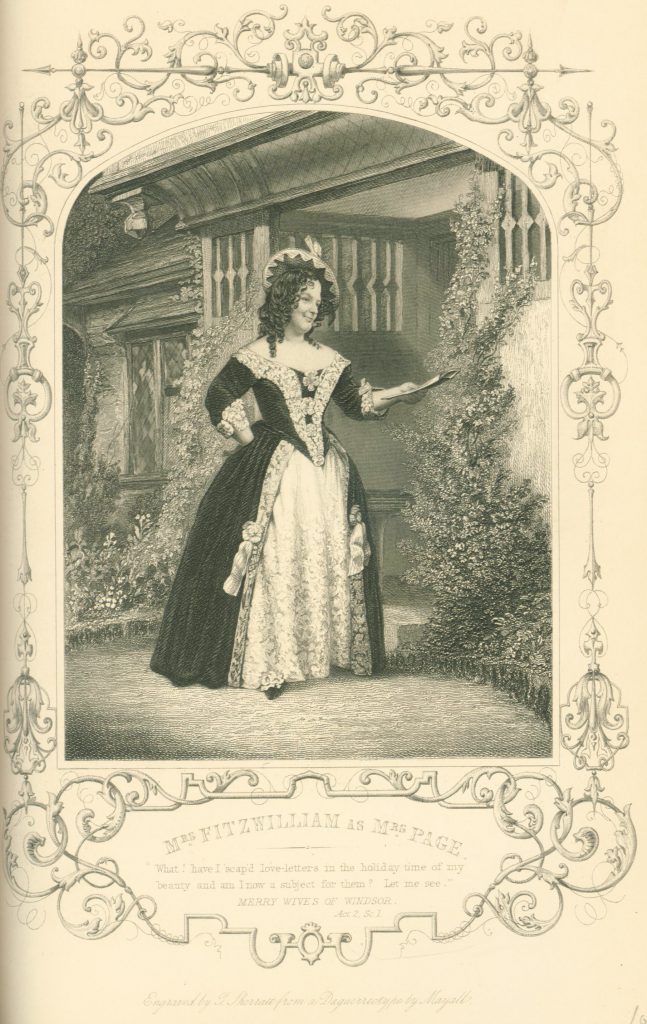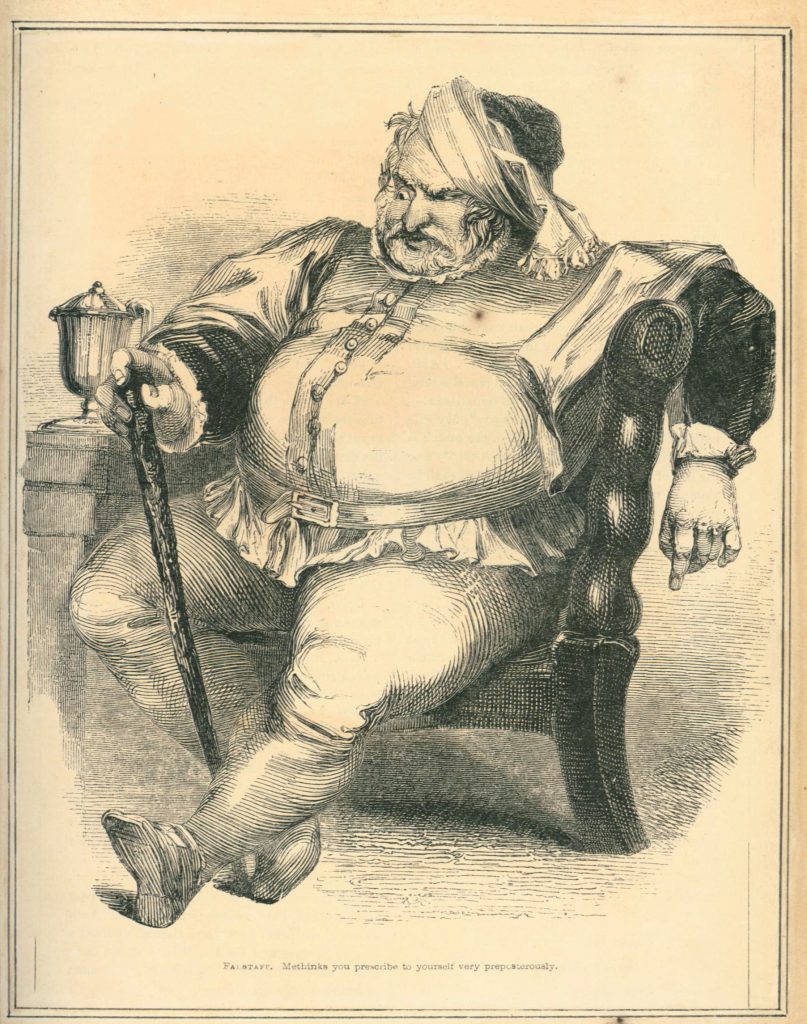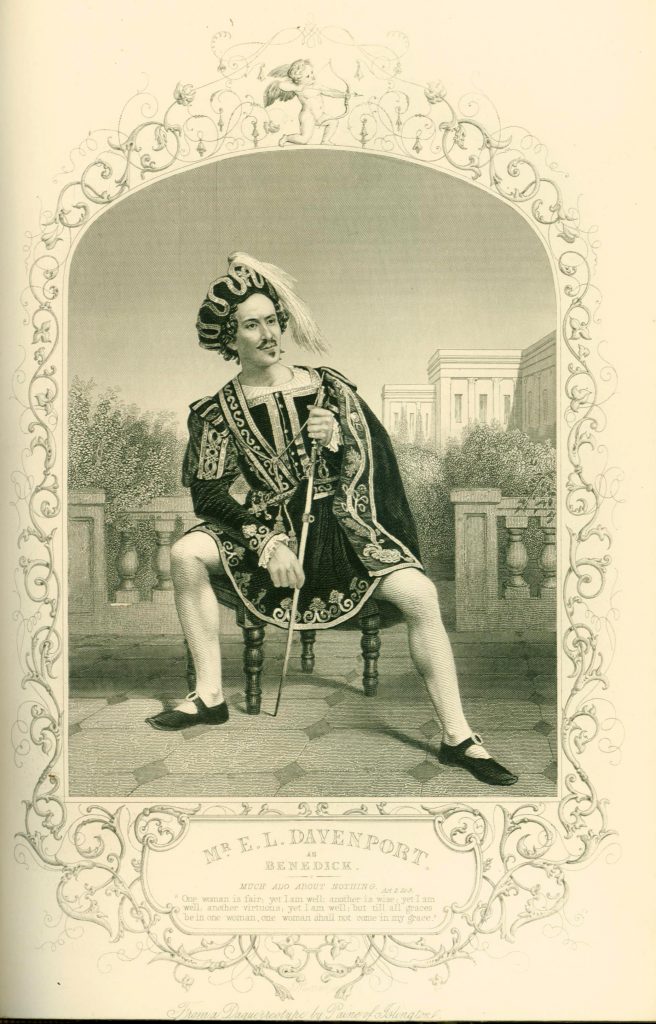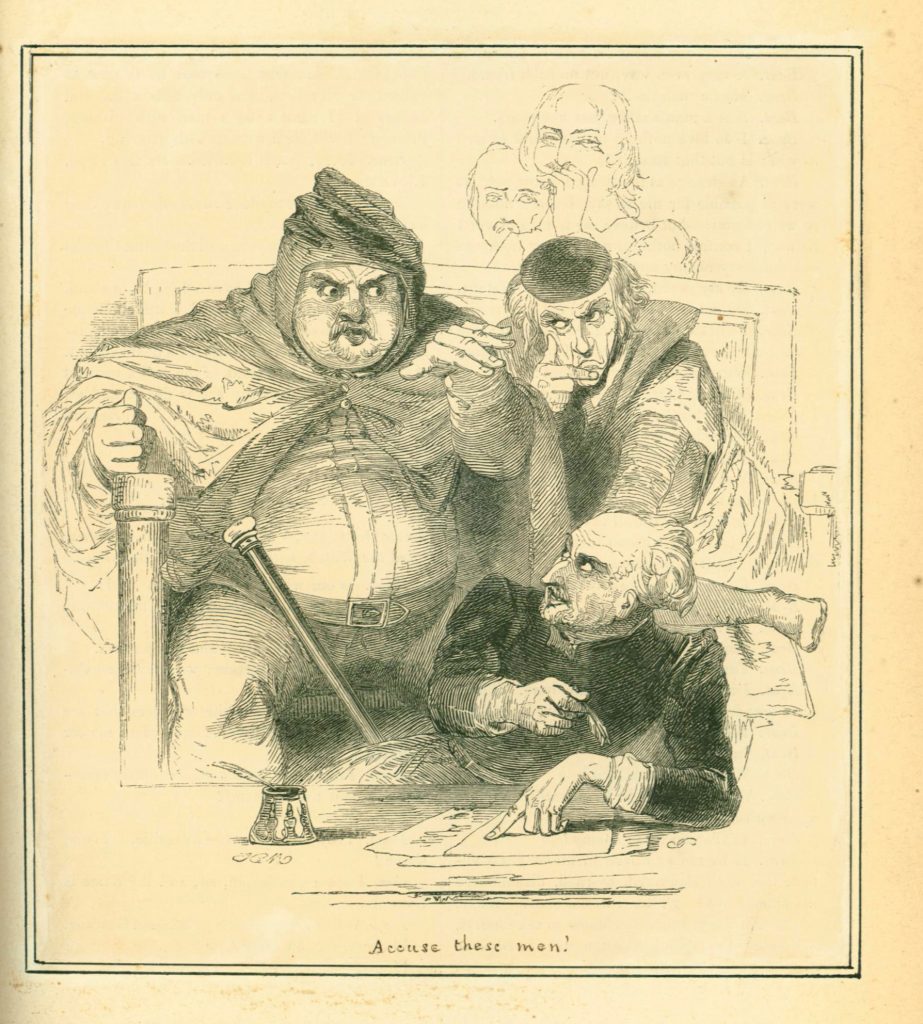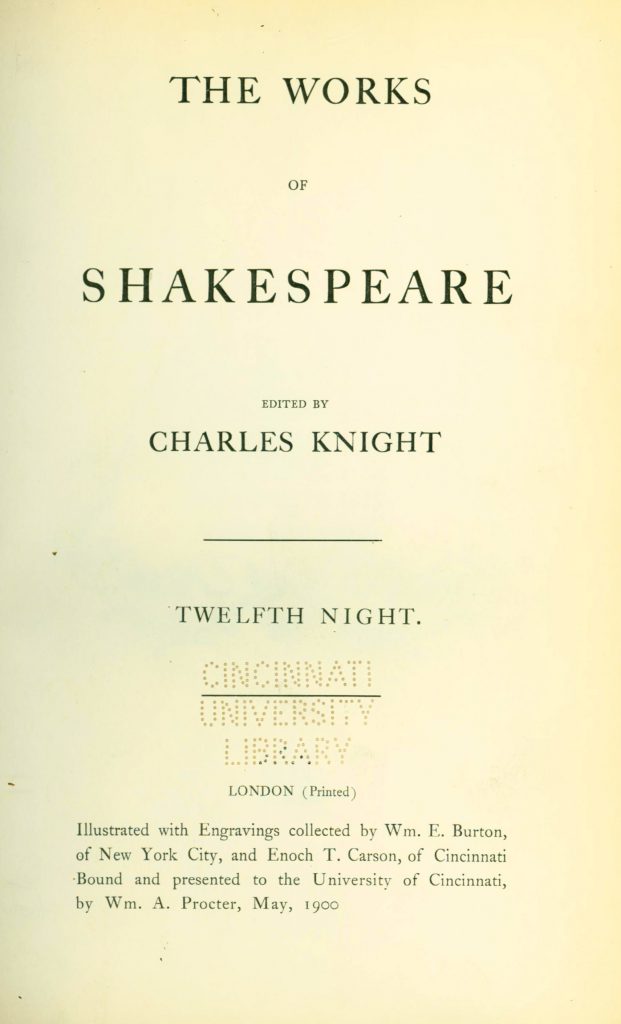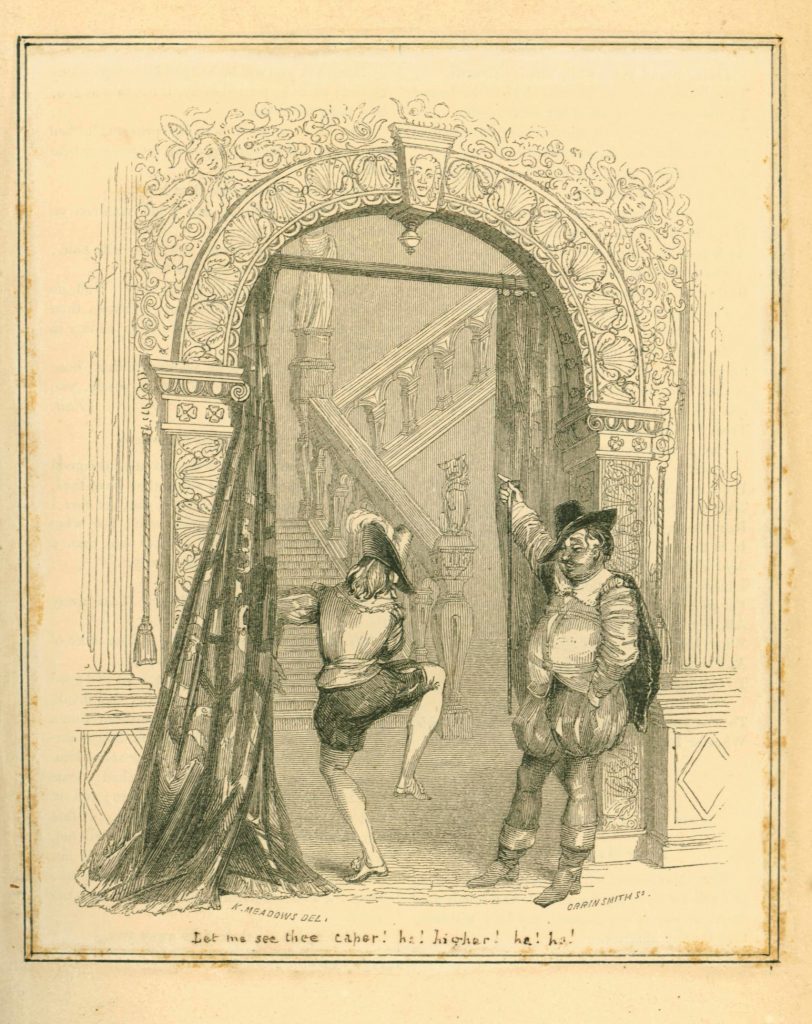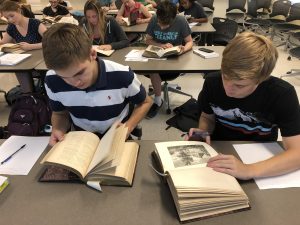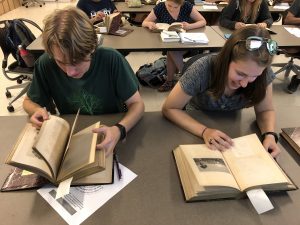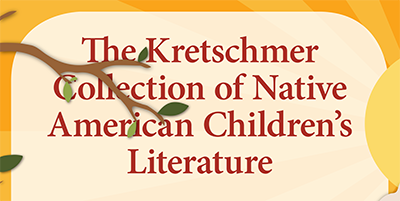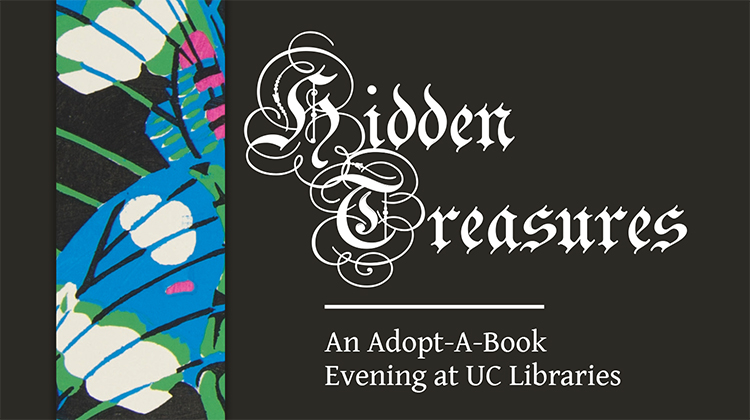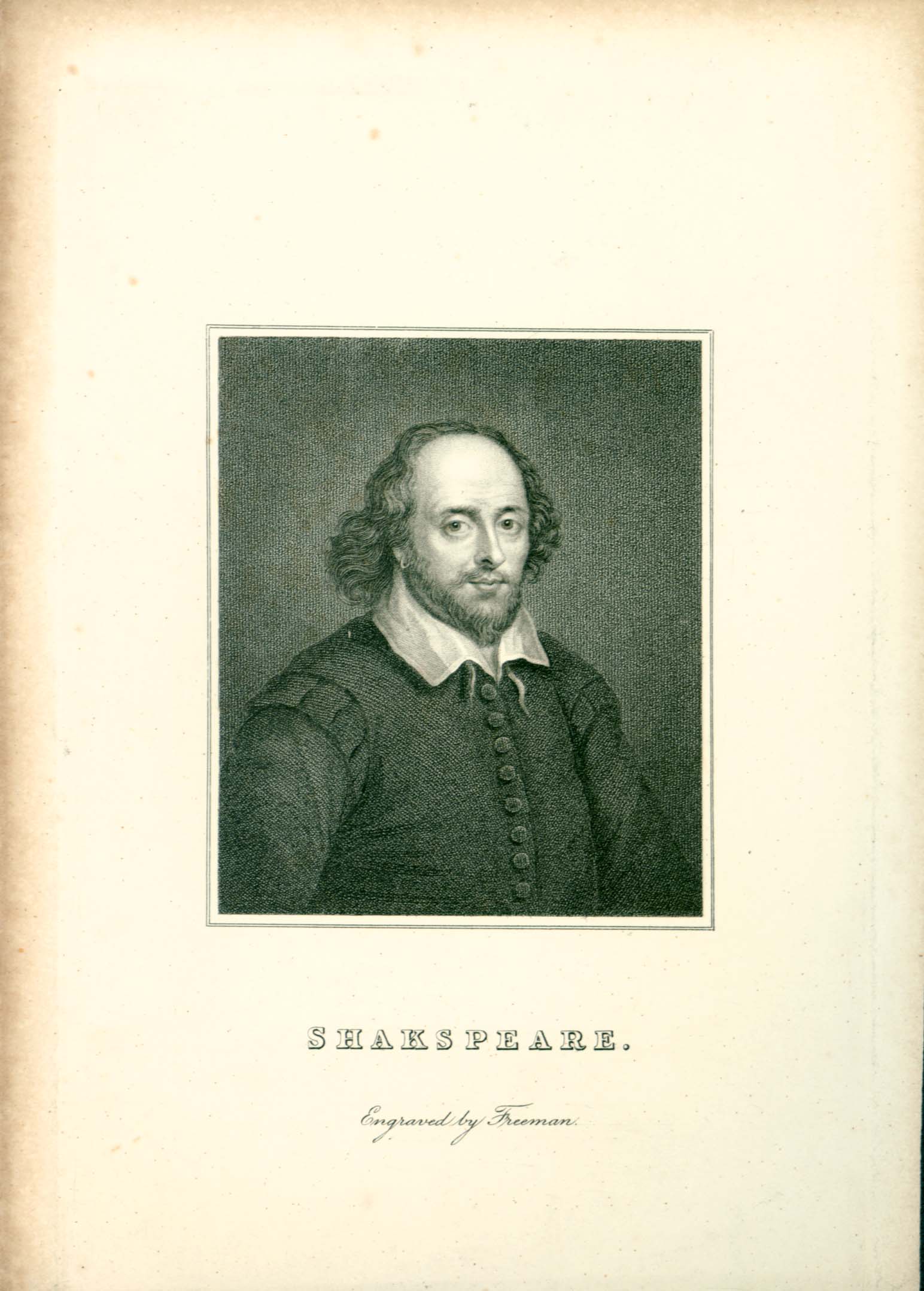
So What is an “Extra-Illustrated Edition?”
By Kevin Grace, University Archivist and Head of the Archives and Rare Books Library
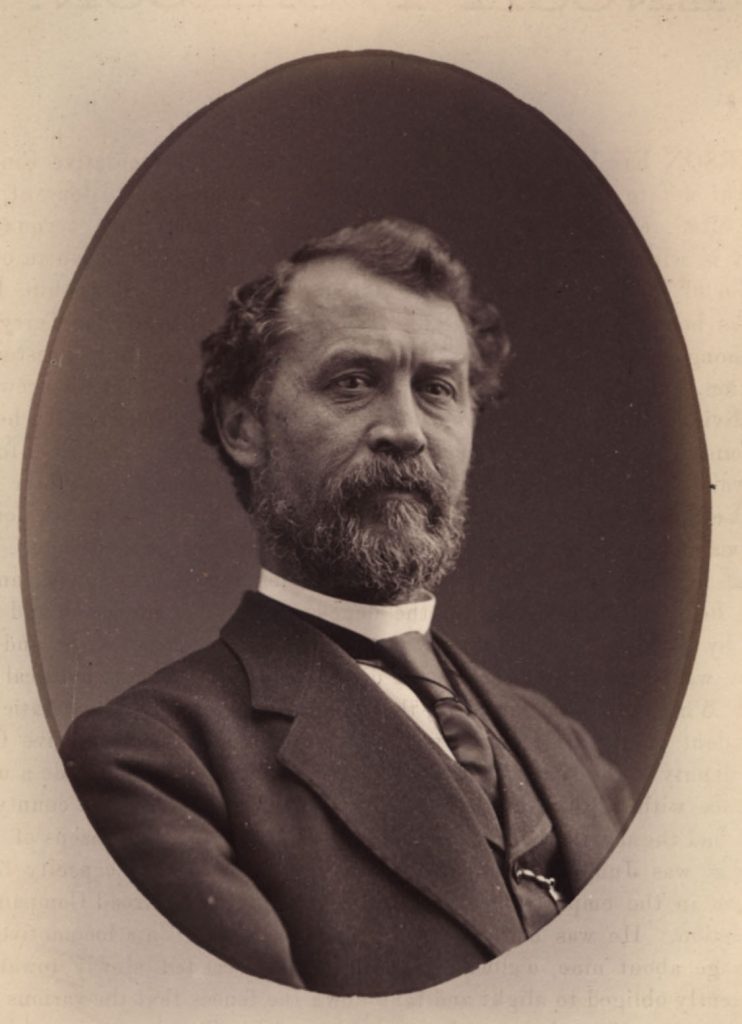
When Cincinnati businessman Enoch Carson began collecting the works of William Shakespeare in the years before the Civil War, he was part of a bibliophile craze that stretched across the Atlantic Ocean. During the 1800s in Europe and America, book lovers scavenged publishers’ catalogues, auctions and bookshops to amass their private libraries built on their specific interests. They corresponded with each other at length, trading prints and imprints and finagling to acquire their most desired items. For Carson, the quests were for Masonic books and for Shakespeare. His collection of books on Masons numbered in the tens of thousands, and while his library of William Shakespeare editions was not quite so large, it was no less impressive for its content.
For Carson, his passion for collecting was fostered by a like passion for Shakespeare. But he wasn’t just a collector – he was a student of the bard as well and a lover of theatrical performance. On one notable occasion in 1865, he even organized a local production of Hamlet for the benefit of soldiers’ families, getting Ohio’s lieutenant governor, Charles Anderson, to star as Hamlet and taking on the role of one of the gravediggers himself. In building his library of Shakespeare editions in the many collected works available to him in the 19th century, Enoch Carson wanted more than just “books.” He wanted prints and engravings and sketches as well – anything related to the plays, to Shakespeare’s Elizabethan era, and to the influences that Shakespeare expressed through his work. This desire on his part was reflective of that transatlantic craze, that fashion to acquire the “extras” that particularly defined one’s private library.
Extra-illustration collecting is said to have begun in 1769 when English clergyman James Granger published his catalog, Biographical History of England from Egbert the Great to the Revolution. Interestingly, though, Granger’s tome did not include any illustrations. What resulted from the publication was that readers began to collect images of the people he listed in his book. In the 1800s, this practice would become known as “Grangerising.” In essence, people were striving to make a particular book or set of books – Shakespeare, histories, botanical treatises, biographical dictionaries, travel and the like – into their own. In a way, collectors were creating new books, and in that sense, what they were creating were unique volumes, something that was special to them and different from everyone else’s set of Shakespeare, for example.
The next step after collecting these extra images was to re-create them as full books by disbinding the original volumes and re-binding them to include the additional pages. In many cases, the new versions were sumptuous items with leather bindings and gilded pages. And these were not scrapbooks. Rather, the images were integral to the texts and often used inlaying in paper frames.
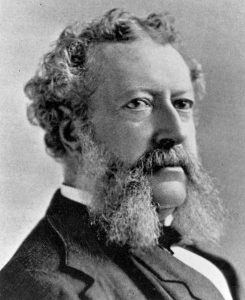
The University of Cincinnati’s Enoch Carson Shakespearian Library is housed in the Archives & Rare Books Library. The hundreds of volumes were purchased from the Carson estate by William A. Procter, one of three private libraries he donated to UC in the 1890s to provide the modern founding of its library holdings. And over the past century, hundreds more books have been added to the Shakespeare holdings. For the most part, these books are 18th and 19th century sets of Shakespeare or books on particular aspects of Shakespeare’s plays and characters, and most are illustrated. In the 20th century, fine press editions have been acquired as well.
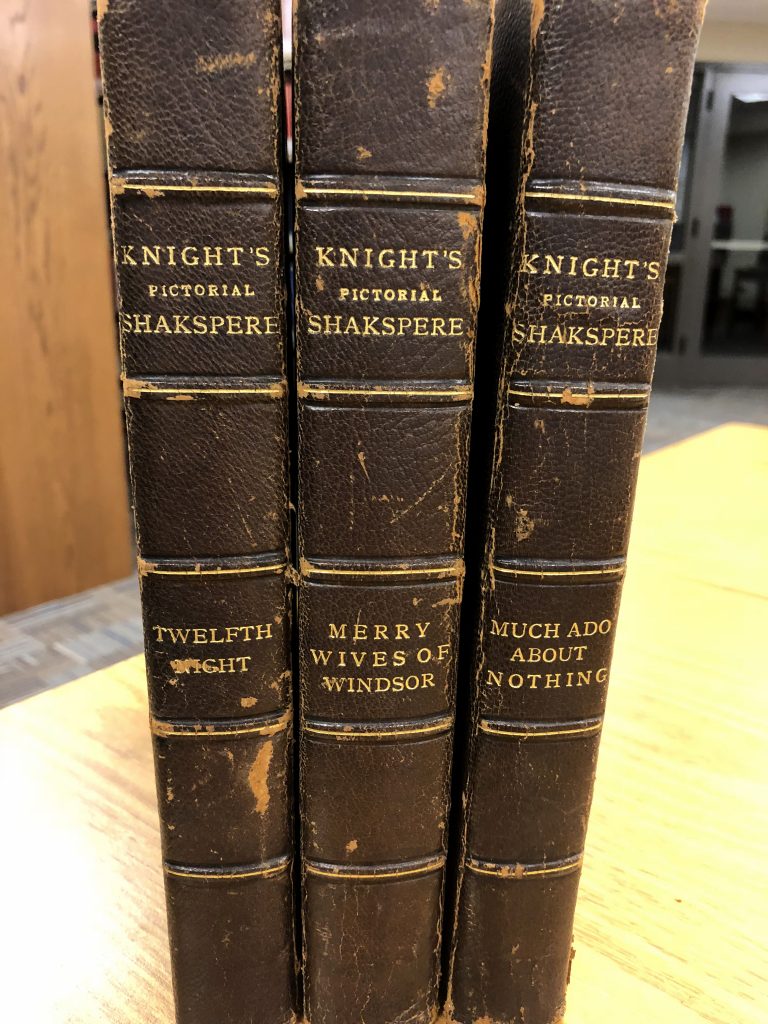
Enoch Carson certainly had an excellent library of William Shakespeare imprints, to which he added his loose illustrations and engravings. And this is where William Procter came in to provide the University of Cincinnati Libraries with its unique extra-illustrated edition of Shakespeare. Before donating it to UC, Procter took the 1839 Charles Knight edition of Shakespeare’s works printed in London and one of the most popular editions, and created a new set. Using the illustrations collected by Carson and William Burton of New York, Procter had each of the 42 volumes disbound in order to add the extra engravings and sketches. These illustrations are of a variety of ages and origins, but when bound with the plays they represent, they provide a visual study of the works that are typical of how 19th-century productions of Shakespeare has informed how we think about Shakespeare today – costuming, stage sets and scenery. Some are steel or copper engravings, others are ink drawings or watercolors. Many of the volumes include engravings of the notable actors who played the various roles in the 18th and 19th centuries, and for the latter, many who actually performed in Cincinnati like William Macready, Edwin Forrest, Charles Kean, Charlotte Cushing and several others.
This semester an Honors class at the University of Cincinnati is studying this extra-illustrated edition in a seminar called “The Bard Abides: Shakespeare in the Everyday World.” The course does not do a close reading of the plays, but rather considers how Shakespeare is part of our daily lives through words and phrases, humor, our approach to love and war, gender identity, and even how different cultures around the world constantly adapt Shakespeare, which is how his plays have been relevant for over four centuries. The volumes’ illustrations form part of the student’s work as collaborative scholars as they create three learning modules on Shakespeare for middle school, high school and college that will be placed on the Archives & Rare Books Library’s Shakespeare web page: http://libapps.libraries.uc.edu/exhibits/shakespeare400/. At the same time, the Preservation Services Department is making custom-fitted archival boxes for each volume.
The seminar students selected one play for each learning module, Much Ado About Nothing, The Merry Wives of Windsor and Twelfth Night. Their creation and development of online assignments and graphic views of the plays from a unique collection will be oriented to spurring students at different educational levels to look at Shakespeare in new ways, and, consider how Shakespeare is regarded in a global context. The modules will be available anywhere and at any time. In November, they will also attend a performance of Twelfth Night by the Cincinnati Shakespeare Company at the Otto Budig Theater in Over-the-Rhine. Enoch Carson and William Procter probably did not conceive that their legacy of a Shakespearian library would take the direction it has; but when students can consider how their work as scholars reaches beyond the classroom and campus borders, they build new legacies. And the Bard abides.

